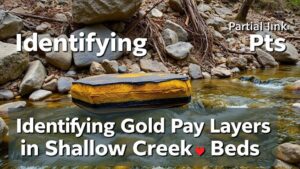How to Use Thermal Conductivity Testing to Locate Subsurface Gold Deposits
How to Use Thermal Conductivity Testing to Locate Subsurface Gold Deposits
Thermal conductivity testing is an increasingly popular method for locating subsurface gold deposits. This technique utilizes the thermal properties of geological materials to identify variations that may indicate the presence of gold. In this article, we will delve into the principles of thermal conductivity, the methodologies employed in testing, and real-world applications that illustrate its effectiveness in mineral exploration.
Understanding Thermal Conductivity
Thermal conductivity is defined as the ability of a material to conduct heat. It is an intrinsic property that varies significantly based on the mineral composition, moisture content, and density of geological formations. In the context of locating gold, it is essential to recognize that different geological materials exhibit distinct thermal conductivity values.
For example, gold is a metal that has high thermal conductivity. When gold is situated adjacent to other materials, such as quartz or iron oxide, variations in thermal conductivity can be detected. e variations can signal potential mineralization, allowing geologists to make informed decisions about where to conduct further exploration.
Methodologies for Thermal Conductivity Testing
There are several methodologies employed in thermal conductivity testing, including:
- Field Measurements: In-situ measurements can be conducted using portable thermal conductivity meters. This allows for immediate data collection and analysis on-site.
- Laboratory Testing: Samples collected from various depths can be analyzed in controlled environments, providing precise thermal conductivity values for different geological materials.
The choice between field and laboratory methods often depends on the depth of the gold deposit suspected, the extent of the area being analyzed, and the resources available for testing.
Case Study: Gold Exploration in the Western United States
A notable application of thermal conductivity testing occurred during the exploration of gold deposits in Nevada, where extensive testing provided critical data. Geologists employed both field and laboratory methods to measure thermal conductivity across different sites. Results indicated that areas with elevated conductivity often corresponded to known gold reserves.
For example, temperatures in certain sediments showed significant differences–areas with higher thermal conductivity were later determined to be rich in mineral deposits.
Real-World Applications
The successful application of thermal conductivity testing can be seen globally. Several mining companies have integrated this technology to reduce costs and improve the efficiency of mineral exploration. The method not only aids in locating potential gold deposits but also serves to delineate other valuable minerals, enhancing overall exploration strategies.
In Canada, for example, a mining enterprise utilized thermal conductivity measurements to identify a previously overlooked zone that contained high-grade gold. By focusing on specific thermal anomalies, the company was able to direct drilling efforts more efficiently, resulting in successful extraction operations.
Addressing Common Questions and Concerns
One common question regarding thermal conductivity testing is its accuracy and reliability. While it is an effective method for identifying potential mineralization, it is not infallible. Thermal conductivity values can be influenced by factors such as moisture levels and the presence of other minerals.
Also, many geologists recommend using thermal conductivity testing as part of a comprehensive exploration strategy that includes geophysical surveys and geochemical analysis for optimal results.
Conclusion and Actionable Takeaways
Thermal conductivity testing presents a promising approach to locating subsurface gold deposits. By understanding the principles of thermal conductivity and employing effective methodologies, mineral exploration can be conducted more efficiently and accurately. As demonstrated in various case studies, integrating this technique into broader exploration strategies can lead to significant discoveries.
To leverage thermal conductivity testing effectively, consider the following actionable takeaways:
- Combine thermal conductivity testing with other geological analysis techniques for comprehensive results.
- Invest in reliable thermal conductivity measurement tools for field testing.
- Maintain awareness of the specific thermal properties of various geological materials to interpret data accurately.
With a strategic approach, thermal conductivity testing can enhance exploration efforts, lead to more efficient resource management, and ultimately increase the chances of discovering valuable mineral deposits.


